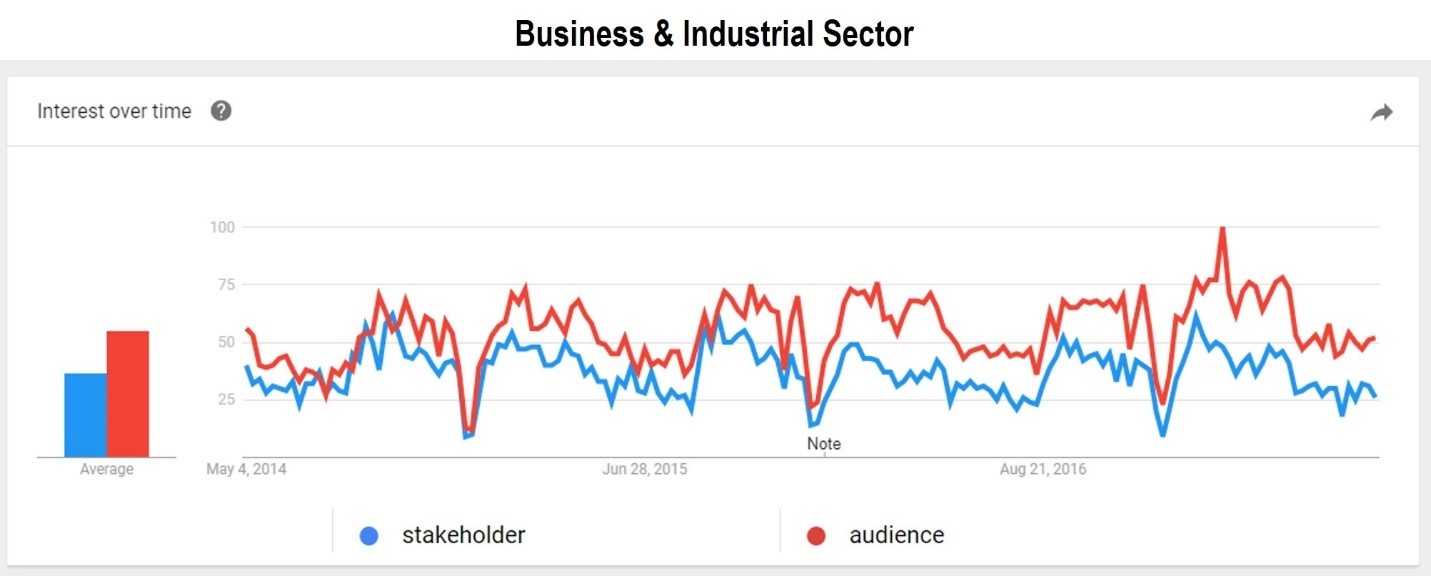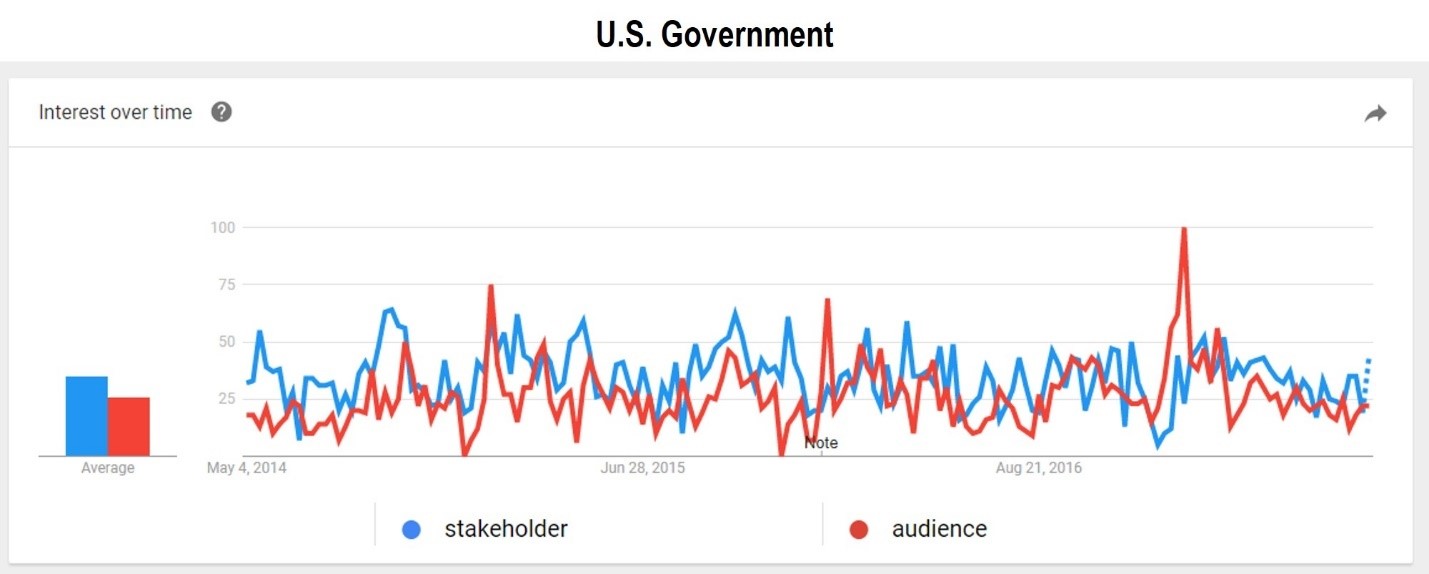Who is a Stakeholder? The Difference Between Stakeholders and Audiences
When your organization is talking about the people who matter to you, do you often hear them referred to as your “audiences?” Or, perhaps you hear the term “stakeholders” used? You might think they’re synonymous and used interchangeably, but there are some critical differences.
The ability of an organization to distinguish between “who is an audience” and “who is a stakeholder” is critical to successful stakeholder engagement and in the bigger picture, to achieving your business goals.
Audience vs. Stakeholder
By simple definition, audiences are the receivers of messages. Typically, organizations are “pushing” information out to audiences – distributing material without any listening in return. A common example is when companies issue news releases. They have information about an event, a merger or acquisition, or a policy decision that is important for their audiences to know, but they most likely are not looking for those audiences to weigh in with thoughts, comments or questions.
Stakeholders are groups or individuals who are directly impacted by the decisions and actions of an organization. And unlike an audience with a one-sided relationship, stakeholders can impact an organization with their decisions and actions. That’s why it is important for organizations to take the time and resources to know who is a stakeholder, and listen to their stakeholders to help understand their expectations. Then, that organization can share back with its stakeholders how it is meeting those expectations, starting a dialogue.
Stakeholders include current employees, former employees, customers, suppliers, shareholders, investors, NGOs, regulators, policy-makers and the general public.
Stakeholder Engagement in Action
In the real world, how are organizations talking about “those who matter” to them?
A recent example is the U.S. Department of Agriculture’s (USDA) National Institute of Food and Agriculture (NIFA). It is soliciting stakeholder input on the emerging needs and opportunities in food and agricultural sciences through the initiative, “NIFA Listens: Investing in Science to Transform Lives.” The goal of the initiative is to ensure: 1) broad stakeholder engagement to further fuel the conversation on how to advance transformative science, and 2) that the organization’s investments in the agricultural sciences are “user-inspired.”
It’s clear that USDA NIFA understands that stakeholders can impact an organization with their decisions and actions, and in this case, is proactively seeking feedback to support goal achievement.
But given the differences between audiences and stakeholders in their ability to impact organizations, both terms are used. According to data from Google over the past 18 months, business and industry tend to utilize audience rather than stakeholder, while the trend in government has been the use of stakeholder, as illustrated in the USDA NIFA example.


Any significant change an organization plans to undertake requires multi-stakeholder engagement. Even before an organization can embark on the first phase of engagement – building awareness – it’s critical for that organization to know who is a stakeholder and fully understand their current perceptions. Only then can organizations and stakeholders authentically engage in conversation, empowering stakeholders to advocate for the organization and, ultimately, contribute to goal achievement.
For more information, please contact us at inquiries@standingpartnership.com.

